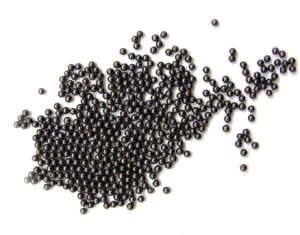
If you use lead bullets or buckshot when hunting wild game or birds, then some of the lead will get into you when you eat the meat. Even after the bullet or buckshot is removed, tiny lead fragments remain that can not be easily seen. A recent study found this is also true with wild pheasants that were killed with lead buckshot or pellets.
Studies show that even after the bullet is removed from a dead animal, numerous very small lead fragments remain in the soft tissue. In deer, lead fragments have been found as far away as 45 cm from the lead bullet's path. Lead shotgun pellets also fragment into small pieces when they are fired into gamebirds and waterfowl.
The researchers purchased carcasses of wild pheasants (all shot by hunters on farmland in the UK) from a butcher shop. All the pheasant carcasses contained tiny metal (lead) fragments, and most contained a large number of them - 75% had more than 15 small fragments. These could be seen on the micro-CT scanner, which shows more than x-rays.
Very important: Studies find that the more people eat meat killed using lead ammunition - the higher their blood lead levels. This is because they are eating the small lead fragments in the meat. These fragments are too small to be easily detected and removed by the consumer during food preparation or while eating.
Bottom line: Avoid eating any meat that was killed with lead ammunition. Lead is toxic when ingested, and there is no save level. Instead, hunting should be done with non-lead ammunition.
From Science Daily: Pheasant meat sold for food found to contain many tiny shards of toxic lead
Eating pheasant killed using lead shot is likely to expose consumers to raised levels of lead in their diet, even if the meat is carefully prepared to remove the shotgun pellets and the most damaged tissue. ...continue reading "After Using Lead Ammunition, Lead Fragments Remain In the Hunted Meat"
